What is a CMS?
A Content Management System (CMS) could be a tool that helps users produce, manage, and modify digital content.
What is Headless CMS ?
Simply put, a headless CMS could be a content management system that manages and organizes content while not a connected front-end or back-end. The headless CMS is wherever all of your content and assets live. Then, you utilize a content API to distribute that content to anyplace and everyplace you would like it — your website, your mobile app, your digital marketing, your CRM, etc.
Why Headless CMS?

- The headless CMS is a necessary piece of technology as a result we tend to sleep in an omnichannel world. The content that enterprises produce for his or her web site conjointly has to seem on apps, integrations, newsletters, and more. And managing a reproduction copy of that content for multiple channels could be a terrible, inefficient nightmare.
- If your company makes an update to the means it describes a product, that update shouldn’t be traced and attached in twenty totally different systems. you ought to be ready to create the update in one centralized location and push the modification dead set all of the places wherever it matters.
- It works in concert central supply of truth for all of your company’s content and assets. It offers you one place to manage, edit, update and publish that content.
- The headless CMS has gained a great deal of traction within the web space in recent times. As multi-channel commercial enterprises will increase in quality, additional and additional firms are choosing a headless design.
“The first rule of any technology used in a business is that automation applied to an efficient operation will magnify the efficiency. The second is that automation applied to an inefficient operation will magnify the inefficiency.”
How does headless CMS work?
Although the multi-channel commercial enterprise isn't a brand new plan as such, within the age of the Internet of Things (IoT), you ought to be able to publish your content anyplace. The classic desktop, tablet, and mobile deliverables of WordPress don't seem to be enough once you need to post content that's simply expendable on smartwatches and VR headsets.
Headless CMSs use APIs to deliver content, that is why they’re typically known as API-first or API-driven CMS. APIs consume information through REST or GraphQL languages. as an example, representational state transfer (REST) could be a package design that helps developers produce internet services and supply ability between clients’ requests and databases. quiet services permit requesters to access and modify information via a collection of unsettled operations.
Another way of rendering information is thru a question language for API known as GraphQL, which isn’t tied to any specific information and is saved by existing codes. By shaping varieties and fields — and functions for every field kind — it gets information from the back-end.
Let’s take an example to place this idea into perspective.
Suppose you’re a significant vehicle enfranchisement service supplier like Trackify. Currently, imagine some ways in which your potential customers would move with you. they could land on your website through a hunt engine, or they could use a voice assistant like Siri or Google Assistant. Your website users may additionally be interacting with you through the mobile app. What you've got here is a wonderful example of multiple users exploiting multiple channels!
To offer identical user expertise across all platforms, you ought to be ready to fetch information (such as quotes or pricing) and deliver them instantly. With the assistance of a headless CMS, you'll be able to expeditiously deliver content via APIs regardless of channels, platforms, or devices. Sure, you'll be able to conjointly succeed similar results with decoupled CMSs, however, you’ll have to be compelled to maintain a delivery system for every channel.
You can’t push your website’s content to an automated device while not building the complete infrastructure for it, will you? but, with a headless CMS, you'll be able to push your content anyplace with REST or GraphQL APIs.
Headless CMS Architecture

Even though this is often thought about as the foremost complicated and time intense of the CMS architectures, this style is, by far, the foremost powerful and versatile. For groups that are trying to provide a considerable quantity of content and deliver info down multiple channels, this is often the optimum selection.
At Bloomreach, we provide a progressive headless CMS that addresses several of the pain points found in alternative styles and even minimizes – and in some cases, eliminates – the disadvantages inherent to the headless CMS design. Our API is meant to supply powerful content redaction options, resolution problems by group action Single Page Application (SPA) frameworks that provide content authors unexampled management.
How to implement a Headless CMS

Implementing a headless CMS is way like employing an ancient CMS, however, while not having to stress concerning the frontend. A headless CMS platform consists of 3 main components:
- Content information
- Content management backend
- API to deliver the backend content to multiple frontends
Since a headless CMS is a style agnostic, your primary concern is structuring your content in a means that produces it straightforward to serve it to multiple platforms and devices. a versatile headless CMS doesn’t impose restrictions on frontend development. you'll be able to use any framework you prefer, together with Angular, React, or Vue. The content isn’t pushed from your backend, however, rather push(via the API) by the assorted channels.
Note that your system may be strictly headless, serving raw content to alternative channels, or a hybrid of headless and ancient design. Optimizely, as an example, provides templates and tools that allow you to style frontends for your own website or apps whereas still serving alternative platforms via headless API.
Why you would like a Headless CMS
There are several reasons why you may need to select a headless CMS.
- The primary profit is its front-end flexibility that permits your developers to use the simplest tools and frameworks to create websites, mobile apps, digital signs, and far additional.
- Another reason why you ought to take into account a headless CMS is as a result of its future-proof technology. Since a headless CMS is constructed upon APIs, it may be simply integrated into newer technologies that’ll start within the future.
- With headless CMSs, you'll be able to increase your promoting speed. meaning your promoting team will support omnichannel commerce additional expeditiously and deliver content with an identical complete message.
- A headless CMS conjointly frees content creators from developers. That way, they will have additional management over the content they turn out and deliver and work to form their content additional participating.
React Native vs React JS - Key Difference, Advantages-Disadvantages, Limitations
Read MoreWhy you may Not want a Headless CMS
- Despite the apparent edges, you may not really want a headless CMS. In such things, it’s best to stay with a decoupled CMS.
- Most headless CMS can want front-end developers to create presentation layers. This adds technical quality and budget restraint to little businesses and start-ups.
- One major downside your promoting team can have with a headless CMS could be a lack of content visual image. A strictly headless CMS has no presentation layer, therefore it’ll be difficult to imagine what the content can appear as if.
- If your company doesn’t have the budget and technical experience to support a headless CMS, you may similarly continue a decoupled design. Also, if yours could be a little business with mounted content delivery channels, there’s no have to be compelled to add inessential technical difficulties.
So what must you do?
Now that you just recognize virtually everything a couple of headless CMS, the simplest recommendation we tend to at Codage Habitation will provide you with is Headless CMS and it makes smart business sense to try and do, therefore, not simply because of the hype!
There are many alternative selections for headless and decoupled CMSs, and it’s up to you to search out the one that matches your business and budget needs. A headless CMS is so reaching to solve several issues, from commercial enterprise content across multiple platforms to change content oftentimes. Yet, it comes with some caveats: the initial technical quality and better maintenance prices.
Hire Our Jamstack Resource
BEST PRICE
We offer resources at best price and beyond expectation value portion. Once you try us, you will understand we overrun easily with our prices by delivering smart work.
BEST SKILLS
We got best resources for you at any experience level. They are trained and skilled with basic oral and written communication, source control, coding standards and best practices and good attitude.
BEST TEAM
We are proactive team who wants to learn along with our clients. We will participate with you to help you get better output instead of just following instructions.


